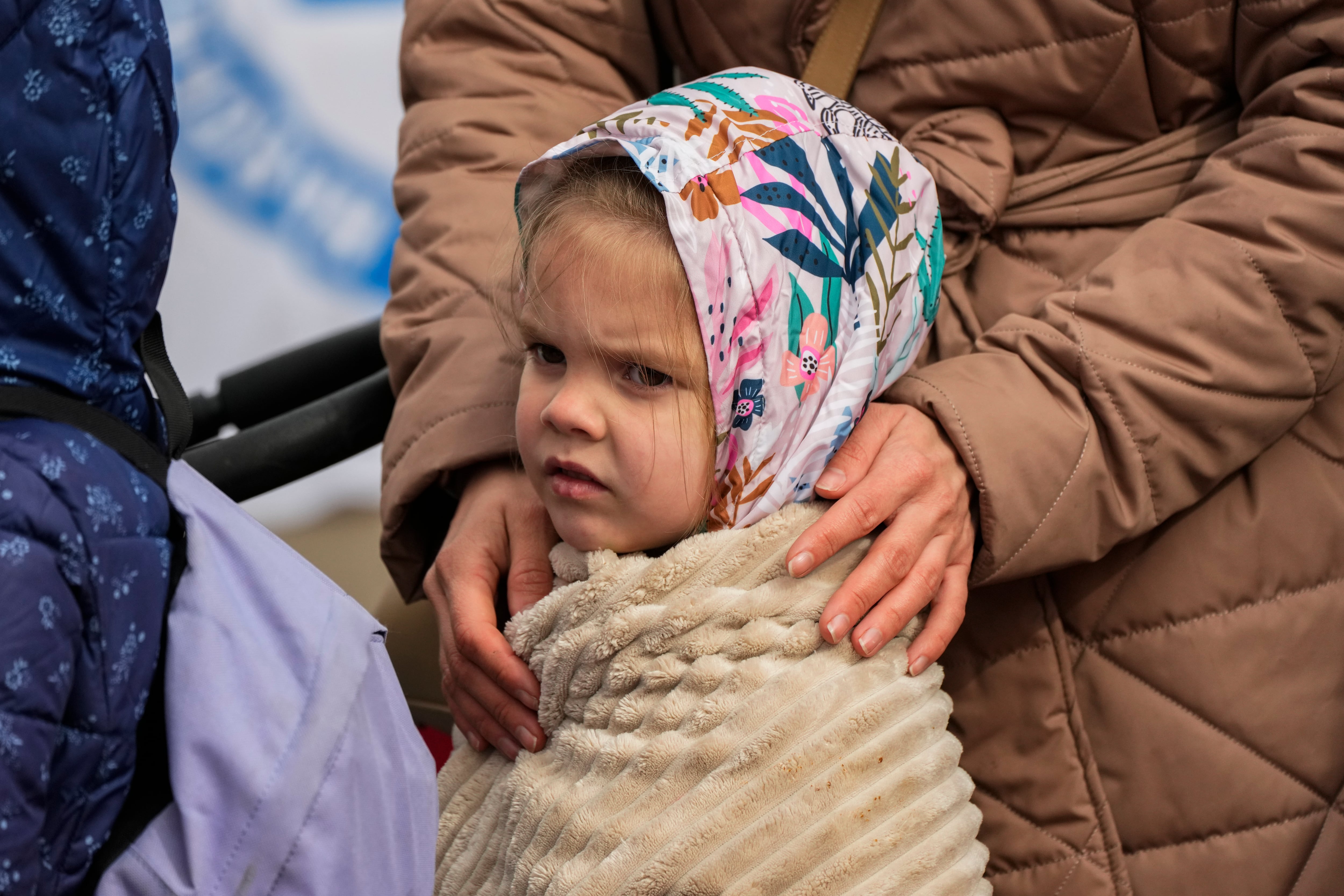At the most recent NATO summit, President Biden announced $1 billion in new funding for food, clean water, shelter, and medical care for those in Ukraine and those who have fled to neighboring countries, but there may be a role for more direct assistance if requested by the countries that are affected.
Since the start of the Russian invasion on February 24, more than 4.1 million people have fled Ukraine and up to 6.5 million have been displaced internally, including about half of Ukrainian children, according to the United Nations.
The initial response from the nations surrounding Ukraine has been generous but may not be sustainable. Strangers have kindly opened their homes, and their governments have offered health services to Ukrainians. Current estimates indicate that 2.6 million Ukrainians have fled to Poland, 609,000 to Romania, 365,000 to Hungary, 387,000 to Moldova, and 281,000 to Slovakia.

However, neighboring nations such as Poland and Romania may soon reach a point where they are overwhelmed by the influx of refugees. Officials in Krakow and Warsaw are looking for assistance managing the displaced persons in Poland. Warsaw’s computer system has been unable to keep up with the volume of newcomer information. In Romania, shelter, diapers, formula, and SIM cards remain in high demand. Germany is echoing the similar sentiments as up to 15,000 displaced people arrive daily.
In response, the State Department’s United States Agency for International Development, or USAID, dispatched a Disaster Assistance Response Team, or DART, to the region. If warranted, USAID offers assistance to host nations via the Office of Foreign Disaster Assistance, or OFDA.
In addition to these efforts, it is worth considering the U.S. military’s humanitarian assistance and disaster response, or HADR, core capabilities for this crisis. U.S. forces have responded to a myriad of global disasters. No matter the disaster, whether a tsunami, earthquake, or epidemic, the U.S. military provided essential resources, transportation, medical supplies and treatment centers, and logistical support in exigent circumstances. Of course, host nations (or NATO) must first request humanitarian assistance from the U.S. before the processes of invoking U.S. military HADR can go forward.
The U.S. military has unmatched capabilities and expertise in expeditionary medicine and logistics, and the need for medical support and supplies is acute. Another core capability of the U.S. military is the response to chemical, biological, or nuclear threats. Given that the Washington Times and other news outlets reported President Biden’s warning of Russian chemical attacks in Ukraine, planning for this scenario may be useful. Of course, any assistance that the U.S. military provides would have to be carefully calculated to avoid widening the conflict.
Military HADR is not a long-term solution to a humanitarian problem. Joint Publication 3-29, the official policy of the U.S. military for providing humanitarian assistance by the Joint Chiefs of Staff, states that Foreign Humanitarian Assistance, or FHA, is intended to supplement or complement efforts of host nation civil authorities or agencies with the primary responsibility for providing assistance.”
Furthermore, it states that “crisis response and limited contingency operations are typically limited in scope and scale and conducted to achieve a very specific objective in an operational area.” In other words, military assistance in humanitarian crises is only designed to be temporary. It serves in a transitional role to help agencies who are on the ground providing direct relief.
The risks of outbreaks of infectious diseases such as COVID-19 among a population already impacted by low vaccination rates is exponentially increased with crowded spaces, lack of sanitation or personal protective equipment, and limited health services brought upon by war conditions. Policy makers also need to consider other infectious disease threats; for example, drug resistant tuberculosis is prevalent in certain areas of the Ukraine.
Host countries and relief agencies must be ready to deal with communicable diseases such as polio, tuberculosis, and COVID-19, while also managing non-communicable diseases and acute conditions that are common in displaced persons — all while simultaneously managing the logistics of food and shelter, reuniting families, obtaining host country travel permits, and planning for onward movement and transition of care.
It is expected that there will be injuries related to trauma, either from exposure to weapons or accidents, including burn and inhalation injuries. Some may be victims of torture, rape, or other intentional injury. This situation may require high-level medical, surgical, obstetrical, pediatric, or behavioral healthcare that is beyond the reach of host country or relief organization capability. These factors support making the case for U.S. military HADR presence sooner rather than later.
While the military is not the best long-term solution to a humanitarian problem like this one, if called upon to assist, military planners will set conditions for orderly transfer of HADR operations to host nations, non-governmental organizations, or NGOs, and private agencies.
In addition, the U.S. military has a long history of working with and beside NGOs on many occasions so that transition is seamless. For example, NGOs regularly participate in U.S. Navy medical missions aboard hospital ships. Although several experienced U.S. and international NGOs are on the ground now, the U.S. military’s unparalleled HADR operations skills can provide the infrastructure to coordinate disparate efforts.
Many U.S.-based NGOs and private organizations are already providing humanitarian assistance in the region, and, if called upon, it is likely that the U.S. military would explore relationships with these entities, as described in policy. Logistics, operations, and public health capabilities are as important as medical care in this situation, so coordination with a balanced collaborative of organizations, each with unique capabilities, will be paramount for successful relief efforts.
As the world faces a potentially more dangerous phase in the war — one that may include exposure to non-conventional weapons — it is prudent to be ready for a rapid escalation in humanitarian challenges and the limits of host countries in the region to cope with further waves of displacement. A near-term collaboration between U.S. military planners and U.S.-based NGOs and humanitarian organizations is warranted and should be undertaken.
Louis C. Tripoli, M.D., Rear Admiral (ret.), United States Navy, and former Command Surgeon, U.S. Indo-Pacific Command, is an advisor for AM LLC, a leading provider of K-12 and community health solutions. Dr. Tripoli’s opinion does not represent official U.S. government or DoD policy.
Have an opinion?
This article is an Op-Ed and as such, the opinions expressed are those of the authors. If you would like to respond, or have an editorial of your own you would like to submit, please email Military Times Senior Managing Editor Kent Miller.
Want more perspectives like this sent straight to you? Subscribe to get our Commentary & Opinion newsletter once a week.





